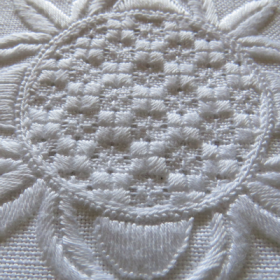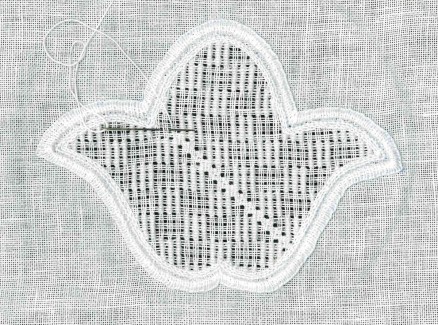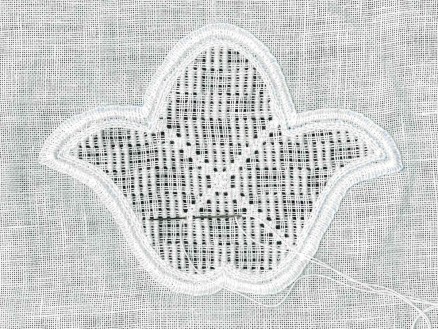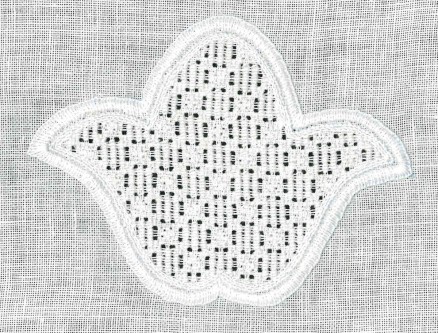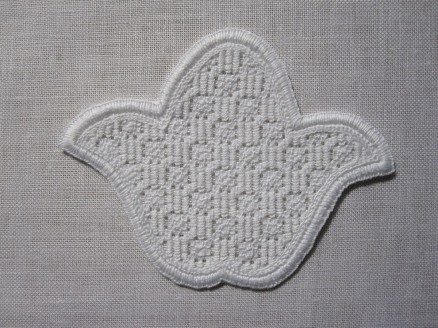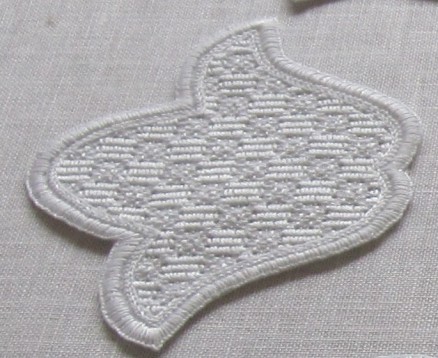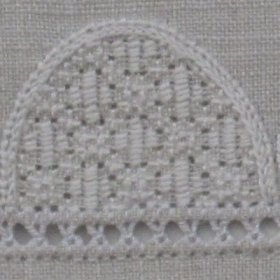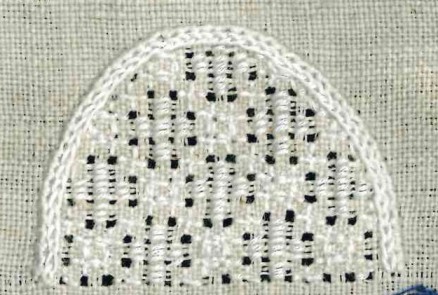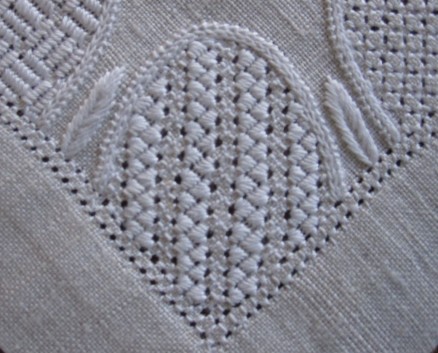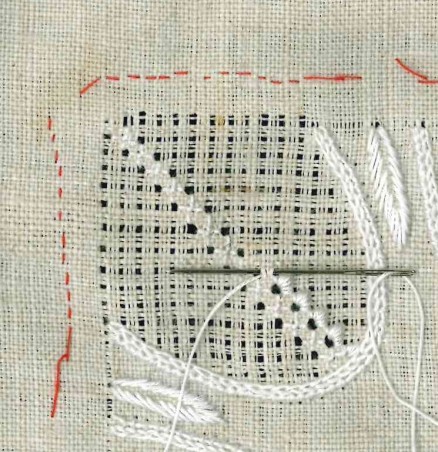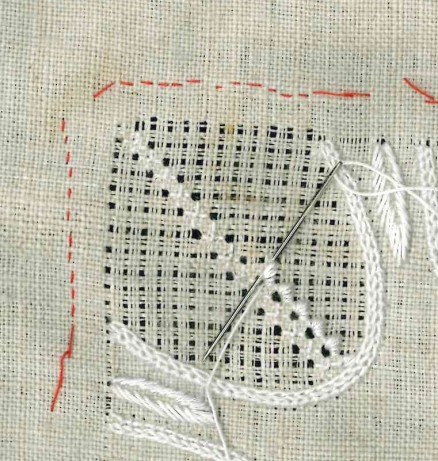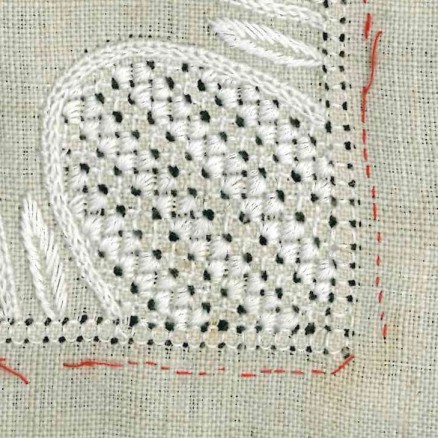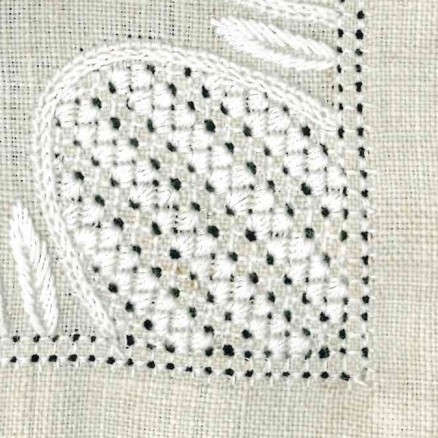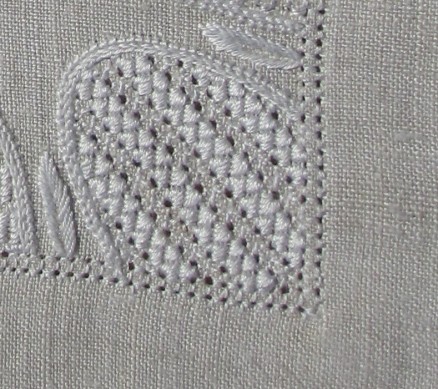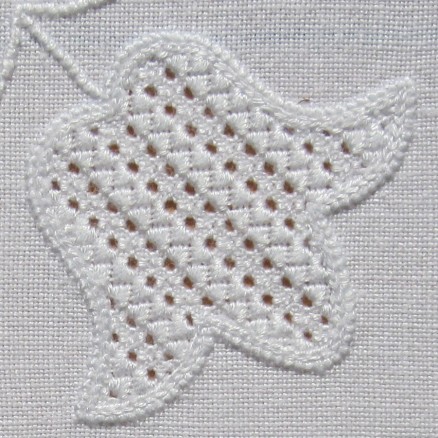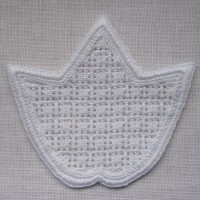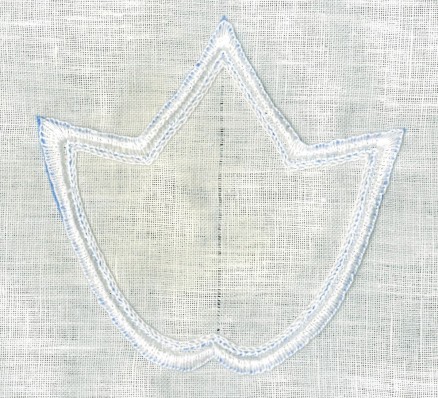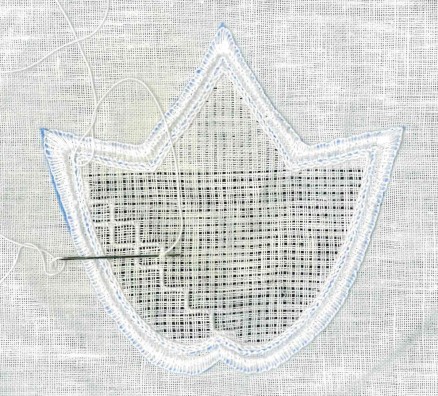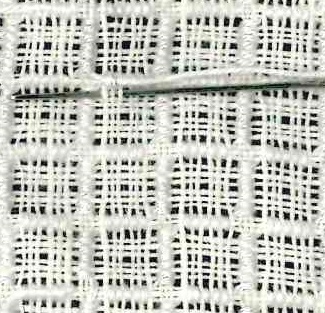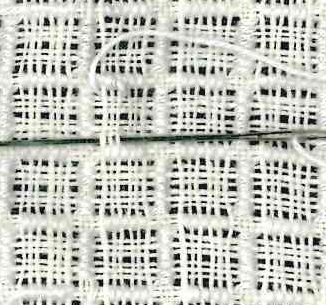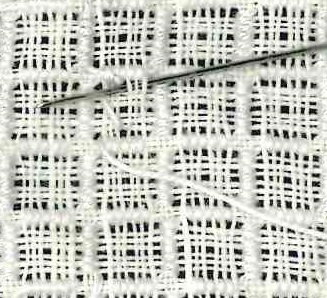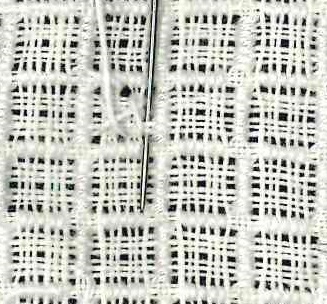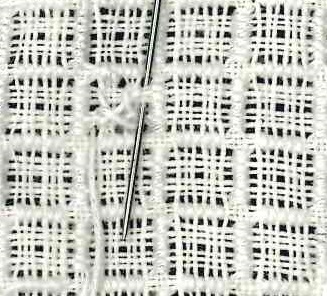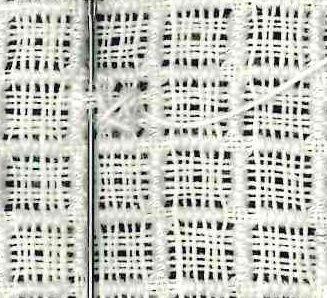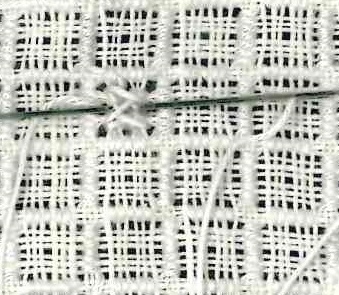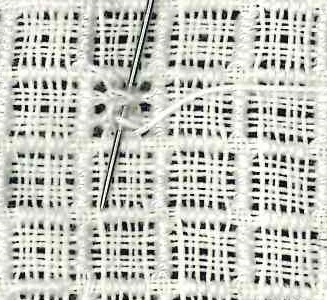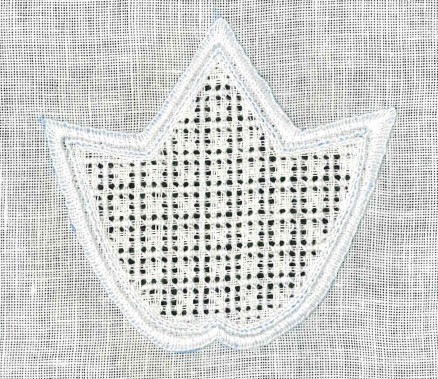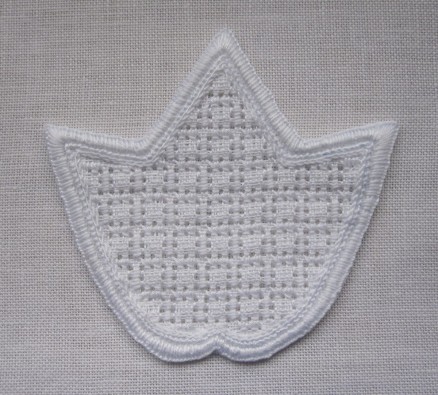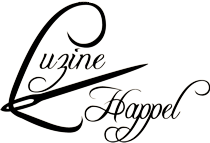No. 474
category: Limet-Filling pattern; please note that this is worked on a leave 4, cut 1grid
stitches used: diagonal Satin stitches over 1, 2, 3 and 4 intersection points of the fabric threads and Rose stitches
center = intersection of withdrawn thread lines (in other shapes or motifs: longitudinal axis =
withdrawn thread line
474 is a beautiful, but difficult pattern to work.
 First, both the horizontal and the vertical center threads are withdrawn.
First, both the horizontal and the vertical center threads are withdrawn.
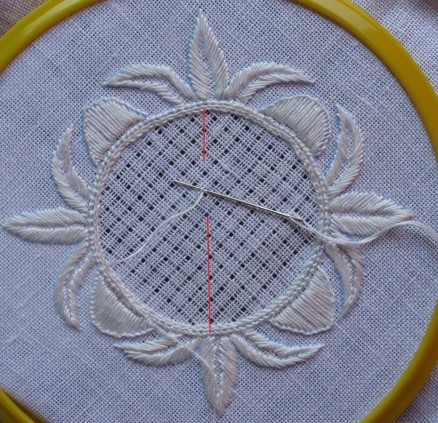 Working from the center outwards, a Limet grid is established by leaving 4 threads, and cutting 1.
Working from the center outwards, a Limet grid is established by leaving 4 threads, and cutting 1.
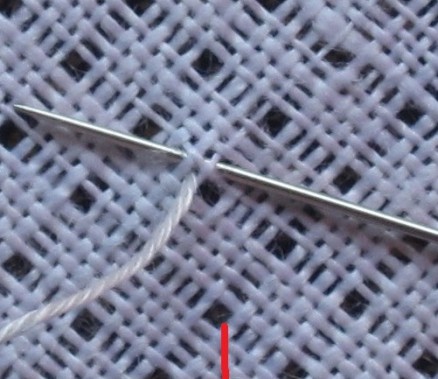 Orient the withdrawn thread lines so that they run diagonally and bring the needle up one thread up and to the left of the bottom of any rhombus on the diagonal center axis. The needle travels to the right and crosses the intersection point of two fabric threads; insert the needle and bring it up at the left one fabric thread up from first stitch.
Orient the withdrawn thread lines so that they run diagonally and bring the needle up one thread up and to the left of the bottom of any rhombus on the diagonal center axis. The needle travels to the right and crosses the intersection point of two fabric threads; insert the needle and bring it up at the left one fabric thread up from first stitch.
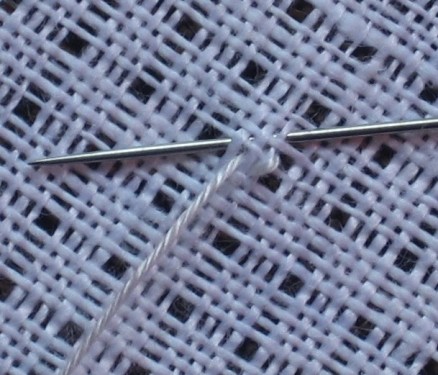 Work more Satin stitches – 7 in all – from right to left, always moving one thread up on both sides.
Work more Satin stitches – 7 in all – from right to left, always moving one thread up on both sides.
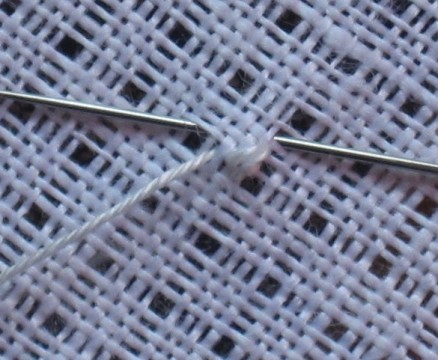 third stitch
third stitch
 fourth stitch
fourth stitch
 fifth stitch
fifth stitch
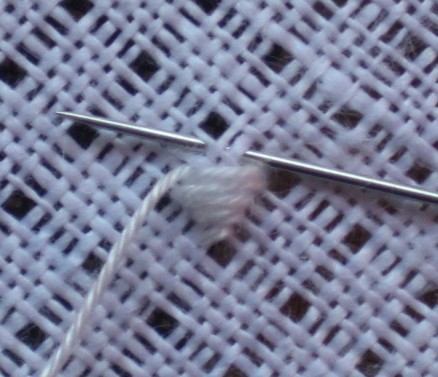 sixth stitch
sixth stitch
 With the seventh stitch the needle travels to the next starting point at the bottom left of the next rhombus.
With the seventh stitch the needle travels to the next starting point at the bottom left of the next rhombus.
 Work the 7 Satin stitches again. When taking the first stitch, be careful to insert the needle into the withdrawn thread line and not between the fabric threads of an adjacent rhombus, as the picture below shows. The fabric threads easily shift out of place when traveling from one rhombus to the beginning of the next.
Work the 7 Satin stitches again. When taking the first stitch, be careful to insert the needle into the withdrawn thread line and not between the fabric threads of an adjacent rhombus, as the picture below shows. The fabric threads easily shift out of place when traveling from one rhombus to the beginning of the next.
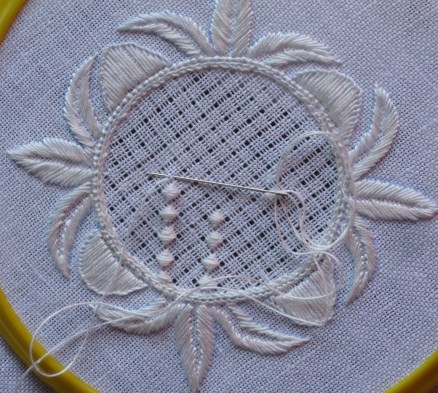 Work, leaving a distance of one rhombus between, rows of Satin stitch rhombi all over the shape.
Work, leaving a distance of one rhombus between, rows of Satin stitch rhombi all over the shape.
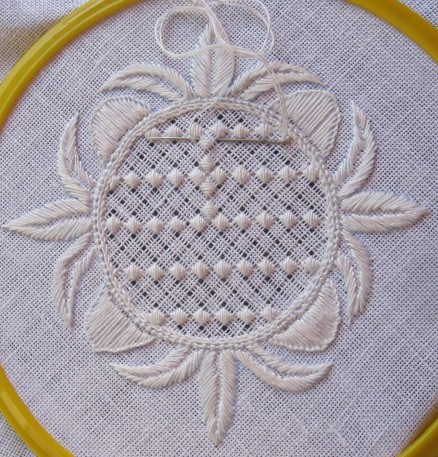 Turn work 90° and work, up from the diagonal center axis, rows of rhombi perpendicular to the rows already worked.
Turn work 90° and work, up from the diagonal center axis, rows of rhombi perpendicular to the rows already worked.
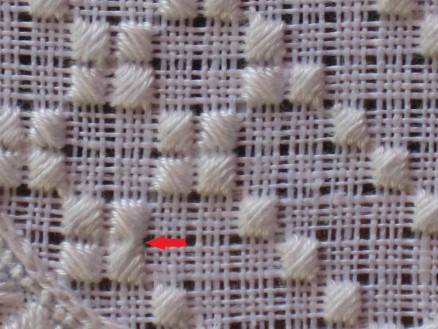 Please be careful to keep the holes between the stitches clean and open, and avoid inserting your needle into a previously worked thread as seen in the picture above – bottom left (red arrow).
Please be careful to keep the holes between the stitches clean and open, and avoid inserting your needle into a previously worked thread as seen in the picture above – bottom left (red arrow).
Work Rose stitches in the remaining squares.
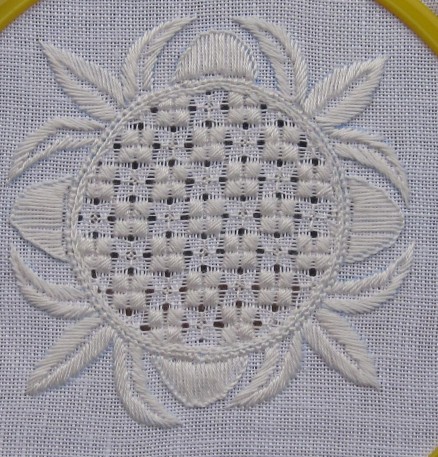 Washed, starched and irond the pattern shows its full charme.
Washed, starched and irond the pattern shows its full charme.
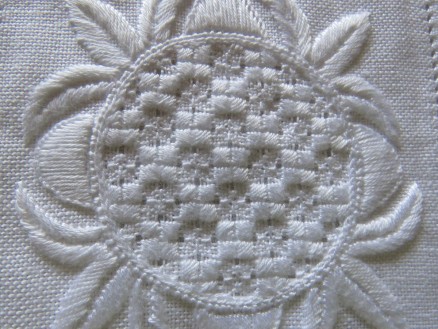 This example was worked on 13.5/cm thread count linen using Coton à broder No. 30 for both the Satin stitches and the Rose stitches.
This example was worked on 13.5/cm thread count linen using Coton à broder No. 30 for both the Satin stitches and the Rose stitches.
